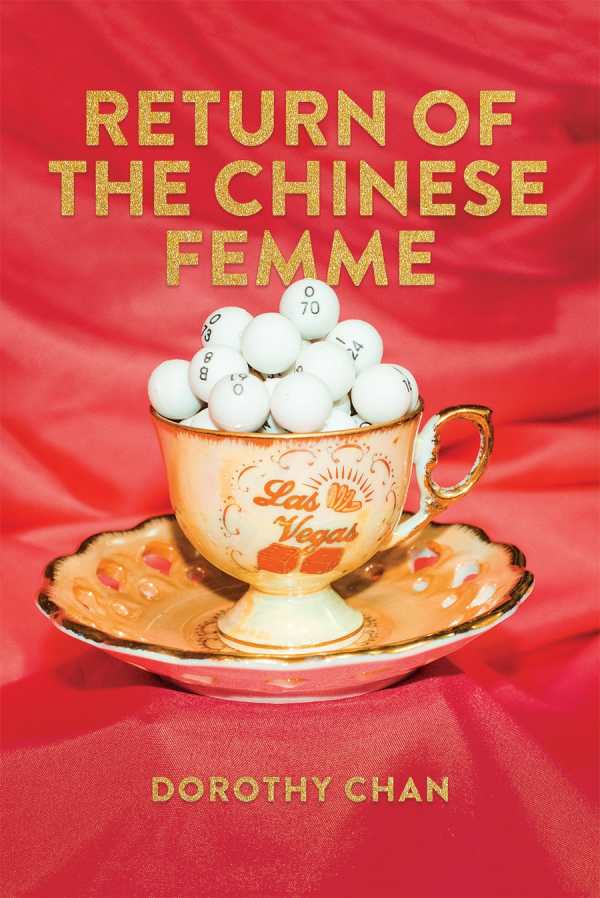Return of the Chinese Femme
Anything can spark and hold a memory according to Dorothy Chan’s poetry collection Return of the Chinese Femme.
Across five sections, the poems’ speaker luxuriates in memories of childhood, family, and past and current lovers. Section titles hint at subjects: in Recipes for Disaster, Sex, and Popular Culture, each poem contains a recipe for a favorite childhood dish, including “chicken wings, / Cantonese style in front of the television” and “my mother’s Cantonese tofu / and tomatoes dish from my childhood.”
Most pieces take the form of triple sonnets, extending the form to follow the subject to a full, considered conclusion. “Triple Sonnet for Black Hair” kicks off with a mother’s warning, but focuses on the significance of color and the concept of fortune in Chinese culture. “Triple Sonnet for Corn Soup” evokes feelings of being homesick for a person, place, and time.
The speaker relishes in that which society denigrates about femininity and femme identity—celebrating sensuality, enjoying food and sex, and embracing power among them. And there are frank discussions of wanting, dreaming of, and having sex. This is femme identity and sex through a queer lens, as the speaker’s lovers are not confined to any one gender. This is made even more explicit in “Comet and Cupid,” a poem about being in love: “I tell him I’m now she/they. People at work keep asking if it’s ‘she’ or ‘they’ when it’s both and all.” Situated near the end of the collection, the entry feels less like a conclusion and more like a new question to ask, explore, and maybe answer.
The poetry collection Return of the Chinese Femme revels in bringing femme interiority into the light.
Reviewed by
Dontaná McPherson-Joseph
Disclosure: This article is not an endorsement, but a review. The publisher of this book provided free copies of the book to have their book reviewed by a professional reviewer. No fee was paid by the publisher for this review. Foreword Reviews only recommends books that we love. Foreword Magazine, Inc. is disclosing this in accordance with the Federal Trade Commission’s 16 CFR, Part 255.

